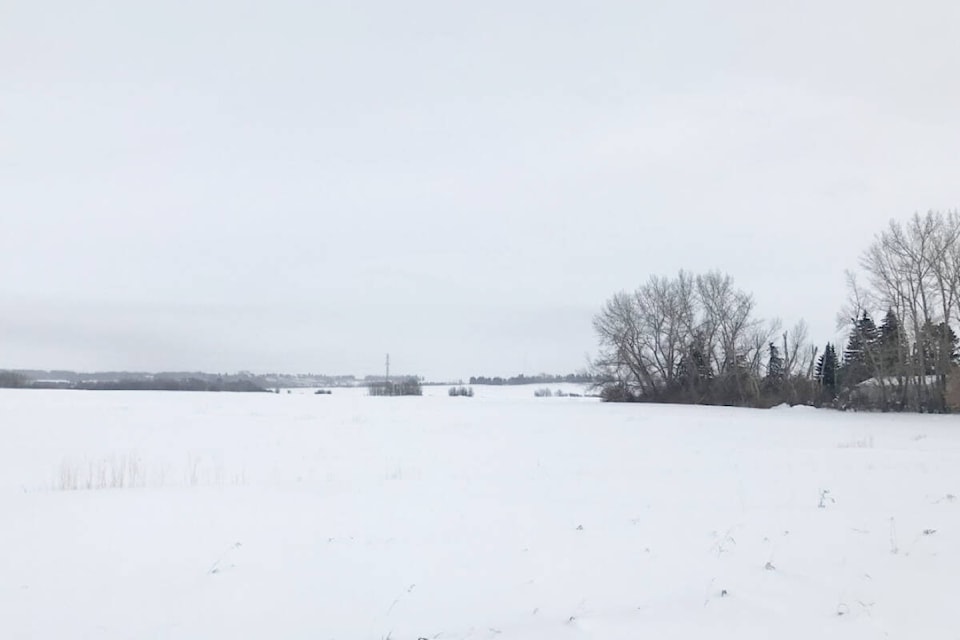Central Alberta farmers are hoping that March lives up to its reputation as the snowiest month.
Snow cover in many areas of the region remains light and follows a dry fall.
“It is a concern,” said Olds-area grain farmer Jeff Nielsen. “That 16, 17 inches we got in June (2022) was all gone and we went into winter extremely dry.
“There’s six inches of snow there right now. Maybe Red Deer north might be able to hold on to that for a little bit.”
But further south where chinooks are more common, if one of those rolls through the existing snow cover may quickly melt and evaporate before the ground soaks it up.
“We need some timely rain this spring,” said Nielsen.
Lonny Kennett, who operates a market garden just east of Red Deer, will be looking at having to do more irrigation, which means more power usage, if more moisture doesn’t come.
He has talked to other producers who said the moisture barely extends a foot deep and follows a dry fall last year.
If the weather turns warm what snow cover there is could melt too fast and just run off the fields, said Kennett, who runs Rare Farms and sits on Red Deer County council.
“The spring thaw is actually a critical thing. If it can come nice and slow and let (the moisture) soak in that’s better than a quick one.”
Even the big rains last summer were not as helpful as one might think. The rain came down so hard the ground was quickly saturated and water ran off instead of sinking into the ground.
“It’s touch and go for a lot of people.”
Delburne-area farmer and Red Deer County Mayor Jim Wood says precipitation is needed in the next few weeks.
“Coming into this year we haven’t seen a huge amount of snowfall yet. So moisture will be a huge concern for us in this region for getting those crops started.
“That will probably be a fairly big (issue) on the farming side.”
Red Deer County agricultural services manager Cody McIntosh said it is early to start ringing alarm bells but recent history does not offer a lot of reassurance.
“We’ve had a couple of dry years already. The fall of ‘21 was and most of ‘22 was very dry other than some timely rains in July,” he said on Friday.
“And now we’re looking at less-than-normal snow on the ground for the region. And further south, there was no snow on the ground for most of January.
“I would say we’re in a bit of moisture deficit right now and having a low-snow winter is concerning. But we also know that some of the snowiest months are March and April with heavy-wet snow coming.”
As always in central Alberta, where the most predictable thing about the weather is it’s unpredictability, a situation that looks dire one week can turn around a week later.
Low moisture levels are “something to be aware of, but it’s way too early to tell, growing season-wise.”
As well, dry spells, depending on their timing, are not all bad.
“You can get most of your crop in the ground and then you have fingers crossed for timely rains in May and June and then we’re off and sailing again.”
Despite the recent dry years, central Alberta has fared better than some areas of the province. In parts of southern and northeastern Alberta, fields were too dry to be seeded.
